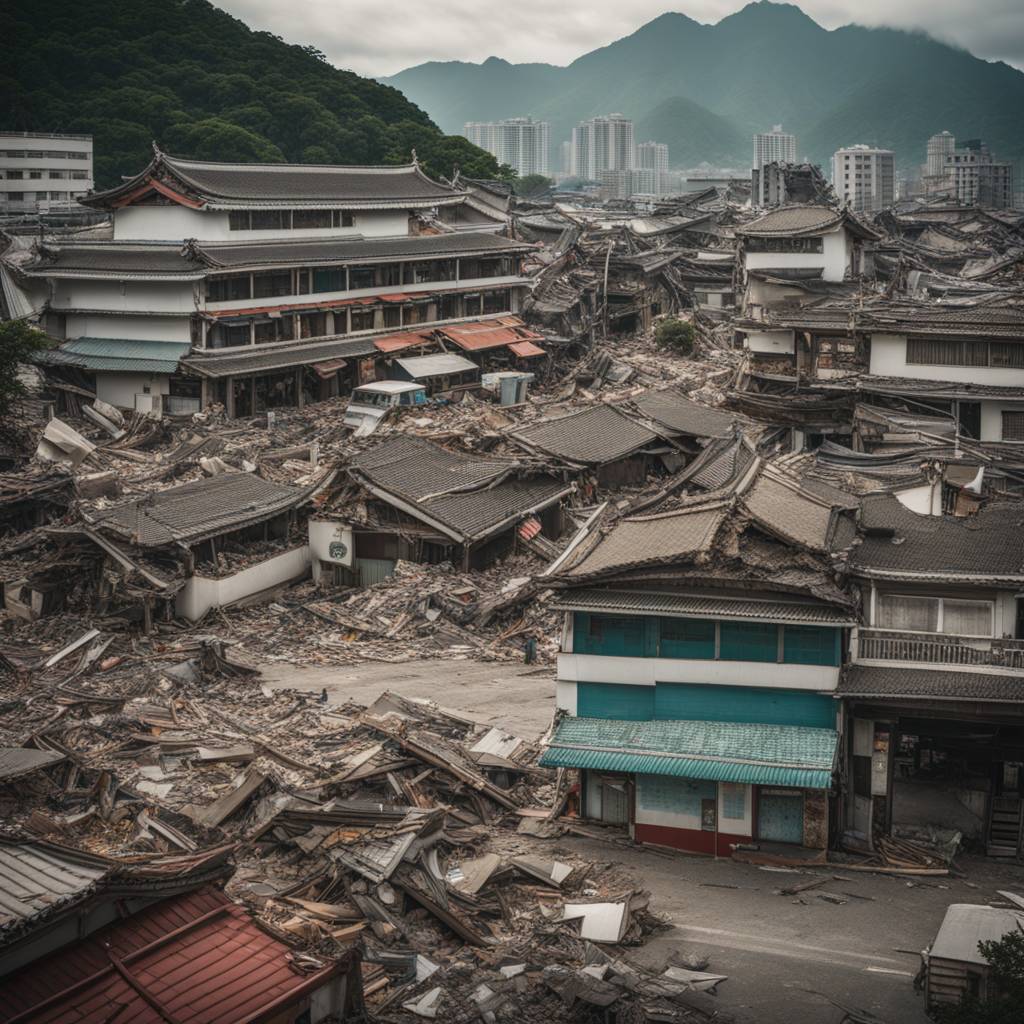On April 2, 2024, a powerful magnitude 7.4 earthquake struck Taiwan, causing tremors that could be felt for over a minute in the capital, Taipei. The quake was centered off the coast of Hualien on Taiwan’s east coast, with an aftershock of magnitude 6.5 also recorded. The earthquake’s epicenter was located about 10 miles beneath the earth’s surface. News broadcasts showed footage of buildings shaking in Taipei, and nearby Japan issued a tsunami warning in response to the earthquake.
In Japan, tsunami waves up to 30 centimeters high were reported hitting the shore on Yonaguni Island shortly after the earthquake at 9:14 a.m. local time. Residents on Okinawa, Miyako, and Yaeyama islands in southern Japan were advised to move away from coastal areas to avoid the potential impact of the tsunamis. The broadcaster NHK reported that waves as high as 3 meters, or 10 feet, were expected to hit Miyako and Yaeyama islands shortly after 10 a.m. This tsunami warning added to the chaos and fear caused by the earthquake in the region.
The earthquake in Taiwan led to concerns about potential damage and casualties in the affected areas. With buildings shaking and tremors lasting for over a minute, residents were left reeling from the impact of the natural disaster. The earthquake’s proximity to the coast raised further alarms as Japan braced for potential tsunami waves in the aftermath of the seismic event. The extent of the damage caused by the earthquake and potential tsunamis was yet to be fully assessed as emergency response efforts were mobilized in both Taiwan and Japan.
The United States Geological Survey and Taiwan’s Central Weather Administration were monitoring the situation closely, providing updates on aftershocks and potential risks following the earthquake. The depth and magnitude of the seismic events were crucial factors in determining the potential impact on the region, as well as the likelihood of further aftershocks. With the earthquake striking in the morning hours, residents and authorities were on high alert for any signs of further seismic activity or tsunamis in the area.
As reports of the earthquake and tsunami warnings spread, international attention was focused on the situation in Taiwan and Japan. News outlets and journalists were covering the developments closely, gathering information and updates to inform the public about the unfolding events. The coordination of emergency response efforts and communication between authorities in both countries was essential in managing the aftermath of the earthquake and addressing the potential risks posed by tsunamis. The resilience and preparedness of communities in the face of natural disasters were put to the test as they worked together to ensure the safety and well-being of all those affected by the seismic events.
In the wake of the earthquake and tsunami warnings, the people of Taiwan and Japan were coming together to support one another and overcome the challenges posed by the natural disaster. Solidarity and cooperation were key as communities mobilized to assess the damage, provide aid to those in need, and work towards recovery and rebuilding efforts. The impact of the earthquake and potential tsunamis served as a reminder of the unpredictable and devastating power of natural disasters, highlighting the importance of preparedness, resilience, and global cooperation in responding to such events in the future.








